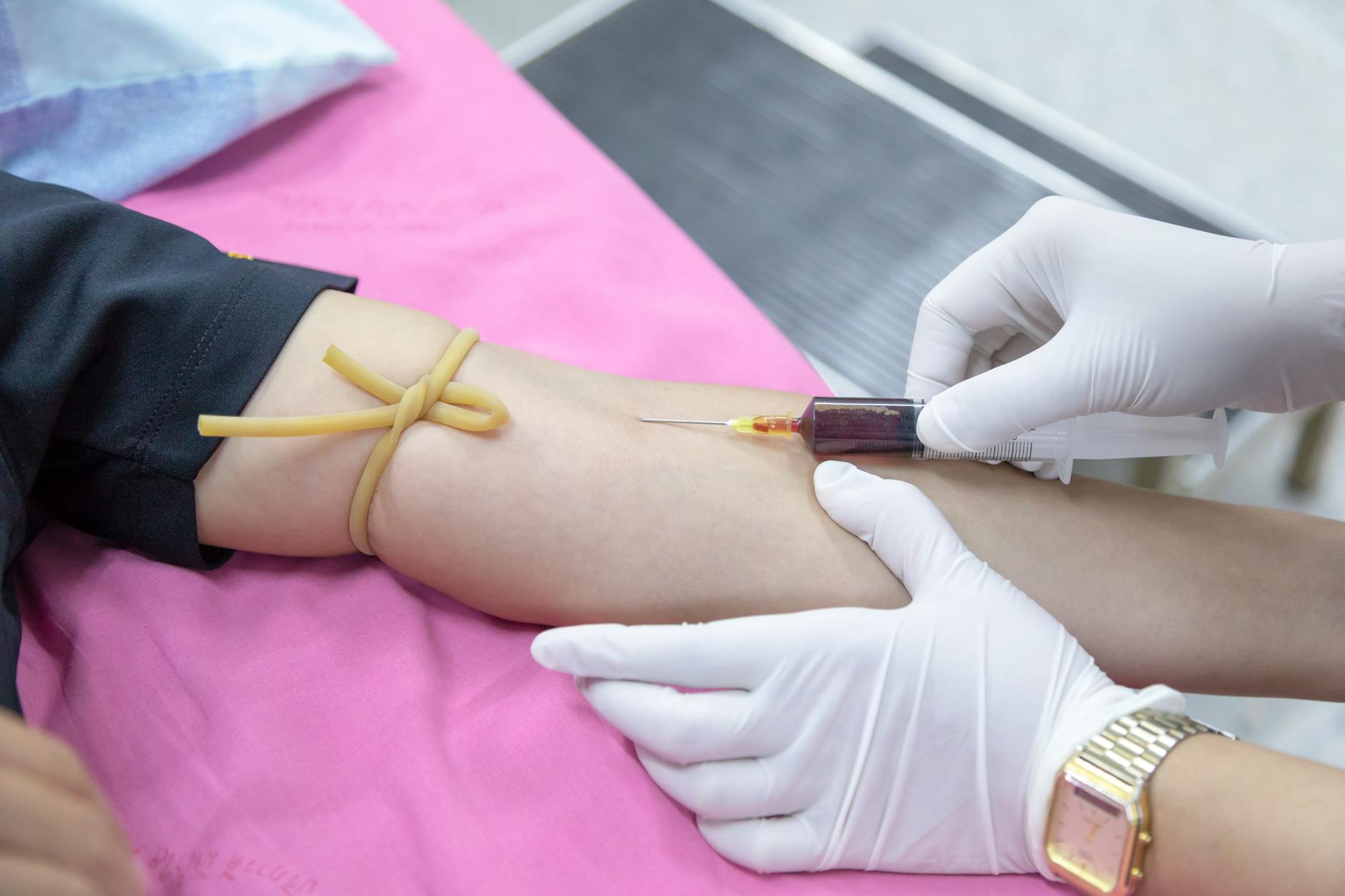The Tourniquet Test is a diagnostic test used to assess capillary fragility, particularly in cases of suspected dengue fever or other conditions that may cause bleeding or bruising issues.

It helps to identify the tendency of blood vessels (capillaries) to break under pressure, which can be a sign of thrombocytopenia (low platelet count).
Tourniquet test principle
In this test 80 mm Hg pressure applied at the forearm causes obstruction, the obstructs venous blood return raises the blood pressure in the capillaries. This pressure causes the rupture of capillaries and causes petechiae at the antecubital fossa.
Tourniquet test procedure
Here is the procedure of the HESS test.
- Apply the Sphygmomanometer cuff on arm and inflate it to 80 mm Hg pressure.
- Keep this pressure for FIVE minutes.
- After five minutes, check the volar surface of the forearm for the appearance of petechiae at the antecubital fossa.
- If you found petechiae, count the petechiae in a 3 cm2 area.
- If you found twenty (20) petechiae in this area, then the result is positive.
Tourniquet test purpose
Hess test or capillary fragility test has THREE purposes.
- Check the capillary RESISTANCE.
- It is used to check the Platelet NUMBER in the blood.
- Hess test is used to monitor the platelets FUNCTION in the body.
- A tourniquet test is used to diagnose dengue.
Factors affecting Tourniquet test (HESS TEST)
There are two main factors that affect the capillary fragility test.
- Time is an important factor. Apply the Sphygmomanometer cuff for only 5 minutes. More than 5 minutes or less than 5 minutes can affect the result.
- Sphygmomanometer pressure is also an important factor.80 mm Hg pressure should be applied. More than or less than 80 mm Hg pressure can alter the fragility result.
Interpretation of tourniquet test Results
- In the case of dengue, a positive tourniquet test can suggest dengue hemorrhagic fever, which is characterized by increased bleeding tendencies due to vascular damage and platelet count reduction.
- If there are more than 10-20 petechiae in the area, the test is considered positive, indicating capillary fragility and a possible bleeding tendency.
- If there are less than 10 petechiae in the area, the test is considered negative.
Do you mind if I quote a few of your posts as long as I provide credit and sources back to your blog? My website is in the exact same niche as yours and my visitors would genuinely benefit from a lot of the information you provide here. Please let me know if this ok with you. Thanks!
Ok